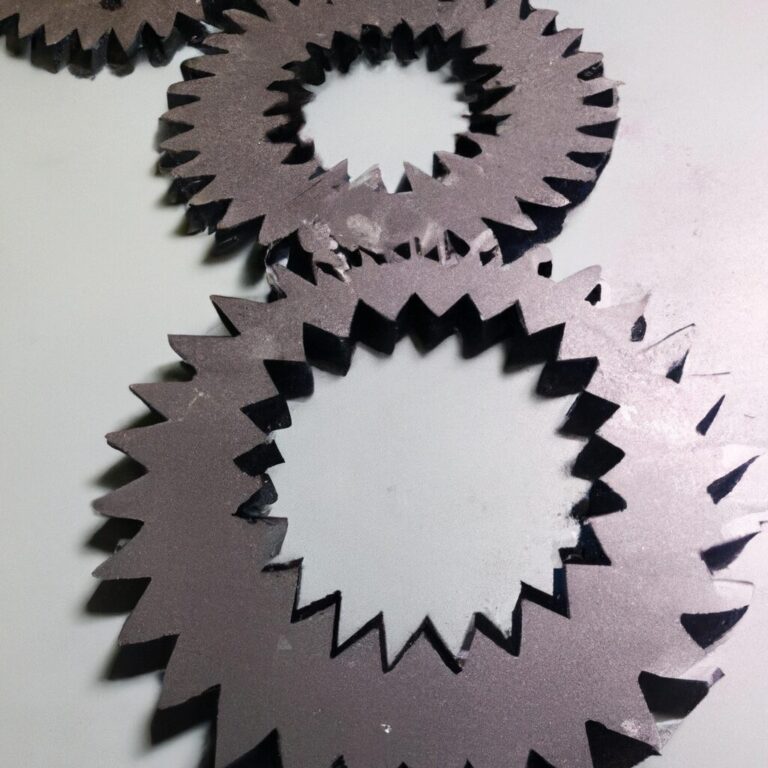Why Is Wheel Balancing Important for Preventing Tire Wear?
Wheel balancing is important for preventing tire wear as it ensures even weight distribution and eliminates vibrations that can cause uneven tread wear. When wheels are properly balanced, it reduces stress on tires, promotes longer tire life, and enhances overall vehicle performance.
Maintaining balanced wheels is crucial to prevent premature tire wear, irregular tread patterns, and other potential damage. It is recommended to have wheels balanced regularly to ensure optimal safety, comfort, and longevity of your tires, while also improving fuel efficiency.
Neglecting wheel balancing can lead to uneven wear, decreased traction, increased tire noise, and potential safety hazards on the road.

Credit: www.amazon.com
The Importance Of Wheel Balancing
Proper wheel balancing is crucial for preventing uneven tire wear. It ensures that the weight is evenly distributed, decreasing the risk of premature tire damage. With balanced wheels, you can extend the lifespan of your tires and maintain optimal vehicle performance.
The Importance of Wheel Balancing Unbalanced wheels lead to uneven tire wear and affects vehicle performance. Correct wheel balance is essential for smooth driving experience and extending tire lifespan.Effects Of Unbalanced Wheels
Unbalanced wheels cause vibrations and can lead to premature tire wear. Uneven tire wear can affect vehicle handling and fuel efficiency.Causes Of Wheel Imbalance
Common causes of wheel imbalance include improper installation and wheel damage. Lack of regular maintenance also contributes to wheel imbalance.Preventing Uneven Tire Wear
Tire wear is a common problem that many vehicle owners face. Over time, tires can wear down unevenly, leading to a range of issues including decreased fuel efficiency, poor vehicle handling, and increased risk of accidents. It is essential to understand the different tire wear patterns and their impact on overall vehicle performance. By regularly engaging in wheel balancing, you can prevent uneven tire wear and ensure a smoother, safer driving experience.
Tire Wear Patterns
Proper wheel balancing helps prevent various tire wear patterns that can occur due to factors such as misalignment and imbalanced weight distribution. Here are some common tire wear patterns to be aware of:
- Cupping or scalloping: This pattern appears as a series of dips or cups around the tire’s circumference. It often indicates suspension or alignment issues.
- Feathering: Feathering occurs when the tread ribs on one side of the tire are worn more than the other side, creating an angled edge. This pattern can be caused by incorrect toe alignment.
- Center wear: Center wear is characterized by increased wear in the center of the tire while the edges remain relatively untouched. It is primarily caused by overinflation, leading to reduced traction.
- Edge wear: The opposite of center wear, edge wear occurs when the outer edges of the tire tread wear faster than the center. Underinflation often causes this pattern, resulting in compromised handling and reduced fuel efficiency.
Impact On Vehicle Performance
Uneven tire wear can significantly affect your vehicle’s performance and safety. Here’s how:
- Handling: When tires wear down unevenly, it can lead to reduced grip and stability on the road. This compromises your vehicle’s handling, making it more difficult to maneuver and potentially increasing the risk of accidents.
- Fuel Efficiency: Properly balanced tires provide optimal contact with the road surface, resulting in improved fuel efficiency. However, if your tires wear unevenly, it can increase rolling resistance and decrease fuel economy.
- Ride Comfort: Uneven tire wear can cause vibrations and unevenness in your vehicle’s ride, making it less comfortable for both drivers and passengers. Balancing your wheels helps ensure a smoother, more enjoyable driving experience.
- Tire Lifespan: Regular wheel balancing helps prolong the lifespan of your tires. By preventing uneven wear, you can avoid premature tire replacement and save money in the long run.
Understanding the importance of wheel balancing in preventing uneven tire wear is crucial for maintaining optimal vehicle performance. By regularly checking and correcting any imbalances, you can ensure safer driving, better fuel efficiency, and longer-lasting tires.
Signs Of Imbalanced Wheels
Imbalanced wheels lead to uneven tire wear, causing vibrations and handling issues. Wheel balancing ensures even weight distribution, promoting smoother rides and prolonging tire lifespan. A crucial maintenance task to prevent premature wear and ensure optimal performance of your vehicle.
Vibrations And Shaking
If you’ve ever experienced your steering wheel shaking or your car vibrating excessively while driving, chances are you have an issue with wheel balancing. Unbalanced wheels can cause vibrations that can be felt throughout the vehicle, making your ride uncomfortable and potentially unsafe. These vibrations typically start at higher speeds and become more noticeable as you accelerate. Ignoring these signs can lead to further damage to your tires and suspension system.Uneven Tire Tread Wear
Inspecting your tire tread regularly is crucial for maintaining safe driving conditions. One of the most common signs of imbalanced wheels is uneven tire tread wear. When your wheels are not properly balanced, it can cause certain areas of the tire to wear down faster than others. Over time, this can result in bald spots, reduced traction, and a higher risk of blowouts. Identifying uneven tread wear is relatively easy with a simple visual inspection. If you notice that the tread depth varies significantly across your tires, it’s a clear indication that your wheels need to be balanced. To ensure the longevity of your tires and maintain a smooth and safe driving experience, it is important to address imbalanced wheels promptly. If you suspect that your wheels may be unbalanced, take your vehicle to an experienced mechanic or tire shop to have them inspected and corrected. Regular wheel balancing not only improves your driving comfort but also extends the lifespan of your tires, saving you money in the long run. Remember, a simple adjustment can prevent excessive tire wear, vibrations, and potentially hazardous situations on the road. Don’t overlook the signs of imbalanced wheels – take action for a smoother, safer ride.
Credit: www.ebay.com
Wheel Balancing Process
Using Wheel Balancing Equipment
Wheel balancing equipment includes a machine that spins the wheel to determine areas of imbalance.
Adjusting Wheel Weights
Technicians adjust wheel weights to counterbalance uneven weight distribution to ensure smooth operation.
Professional Wheel Balancing
Professional wheel balancing is an essential aspect of maintaining the performance and longevity of your vehicle’s tires. When performed by skilled technicians using advanced equipment, professional wheel balancing ensures that the weight distribution of the tire and wheel assembly is uniform, eliminating any potential vibration or uneven tire wear.
Benefits Of Professional Service
Professional wheel balancing offers several key benefits for your vehicle. First, it promotes smoother driving by eliminating vibrations that can result from imbalanced wheels, providing a more comfortable and safer driving experience. Secondly, it extends the lifespan of your tires by ensuring even wear patterns, which can ultimately save you money by reducing the frequency of tire replacements. Lastly, professional wheel balancing can also improve fuel efficiency, as it minimizes unnecessary friction and rolling resistance on the tires.
Frequency Of Wheel Balancing
The frequency of wheel balancing can vary depending on driving habits and road conditions. As a general guideline, it is recommended to have your wheels professionally balanced every 6,000 to 8,000 miles. However, if you notice any signs of vibration or uneven tire wear, it’s crucial to have your wheels balanced immediately to prevent further damage to the tires and suspension components.

Credit: issuu.com
Frequently Asked Questions On Why Is Wheel Balancing Important For Preventing Tire Wear?
Does Wheel Balance Affect Tire Wear?
Yes, wheel balance affects tire wear. Uneven weight distribution can cause tires to wear unevenly, leading to premature tire wear. It is important to maintain proper wheel balance to ensure balanced tire wear and longer tire lifespan.
Why Wheel Balancing Is Important?
Wheel balancing is essential for a smooth and safe ride. It ensures even weight distribution to minimize vibrations and improve handling. Properly balanced wheels reduce wear and tear on tires, suspension, and steering components, extending their lifespan. Regular balancing also enhances fuel efficiency and prevents costly repairs.
What Is The Most Important Reason For Balancing Wheels Is That It Prevents?
Balancing wheels prevents uneven tire wear and ensures smoother driving experience.
What Happens If You Don’t Do Wheel Balancing?
Without wheel balancing, you risk uneven tire wear, vibrations, and potential damage to suspension components. It can also lead to unsafe driving conditions and affect fuel efficiency. Proper balancing ensures a smoother ride, longer tire lifespan, and improved safety on the road.
Conclusion
Proper wheel balancing is crucial in preventing uneven tire wear. Maintaining balance enhances safety and prolongs tire lifespan. Regular balancing ensures optimal performance and a smoother driving experience. Take care of your wheels to save money in the long run.
Your tires and wallet will thank you.


